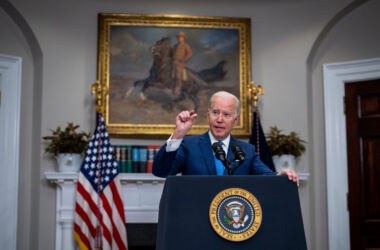On the night of May 7, 2025, India sent a thunderous message across the Line of Control (LoC) — and deep into the heart of Pakistan. Codenamed Operation Sindoor, a meticulously coordinated offensive by the Indian Armed Forces struck nine high-value terrorist training camps in Pakistan and Pakistan-administered Kashmir. This marked one of the most assertive military responses from New Delhi in decades, a decisive action aimed at dismantling the infrastructure of cross-border terrorism that has plagued the Indian subcontinent for generations.
A Response Born of Blood
The strikes followed a brutal terrorist attack in the Baisaran Valley of Indian-administered Kashmir on April 22. That attack claimed the lives of 25 Hindu pilgrims and injured dozens more. India swiftly attributed the massacre to Pakistan-based terrorist groups Jaish-e-Mohammed and Lashkar-e-Taiba — organizations long accused of operating with impunity under Islamabad’s tacit or explicit protection. For India, the time for restraint had ended.
“These are not just camps,” India’s Defence Minister Rajnath Singh stated during a press briefing. “These are factories of death, where the poison of jihad is brewed and unleashed on innocent civilians. Our response was precise, targeted, and necessary.”
Targets of Terror
Among the nine locations struck were some of the most notorious breeding grounds of terrorism on the subcontinent. The Markaz Taiba camp in Muridke, a Lashkar-e-Taiba stronghold known for training Ajmal Kasab — the captured terrorist involved in the 2008 Mumbai attacks — was hit. So was the Markaz Subhan facility in Bahawalpur, long linked to Jaish-e-Mohammed leader Maulana Masood Azhar. Other targets included the Gulpur, Sawai Nala, Sarjal, and Mehmoona Joya camps, all of which India claims were involved in either training or directing attacks against civilians and security personnel in Jammu and Kashmir.
Perhaps most notably, strikes were carried out in Sialkot and Lahore — deep inside Pakistan’s Punjab province, far from the usual flashpoints near the LoC. This is the first time in over fifty years that Indian forces have struck so deeply within Pakistani territory in a declared military operation.
India’s Measured Precision
India emphasized the precision and restraint with which Operation Sindoor was carried out. “Not a single Pakistani military base was targeted,” said Foreign Secretary Vikram Misri. “This was not an act of war against a nation — it was an act of justice against terrorism.”
According to the Indian government, extensive surveillance and intelligence were used to ensure civilian casualties were minimized. Satellite imagery, electronic intercepts, and human intelligence all contributed to selecting targets believed to house active terrorist operatives.
Nonetheless, Pakistan claims 26 civilians were killed and over 40 wounded, accusing India of engaging in “cowardly and unlawful acts of aggression.” Islamabad has vowed to retaliate, with Prime Minister Shehbaz Sharif stating that “Pakistan reserves the right to respond forcefully.”
Global Reactions and Geopolitical Calculations
The international response was swift, though cautious. China, which maintains close ties with Pakistan, issued a statement urging “maximum restraint” and discouraging any escalation. The United States, characterized the conflict as “a shame” and called for de-escalation. Secretary of State Marco Rubio contacted both countries’ national security advisors and urged them to “keep lines of communication open.”
Europe, largely focused on its own internal tensions and the continuing fallout of the Ukraine crisis, issued generic calls for calm. But quietly, several Western capitals have expressed sympathy with India’s position. Privately, a French intelligence official noted, “It is difficult to fault a nation that has endured decades of terror striking back at its perpetrators.”
Indeed, India’s position in the international community has evolved. Once lectured on restraint, New Delhi is now recognized as a responsible regional power confronting persistent asymmetric threats. Western capitals increasingly understand that state-sponsored terrorism emanating from Pakistani territory is a threat not only to India, but to the broader international order.
The Specter of Nuclear Confrontation
The elephant in the room remains the nuclear arsenals possessed by both nations. India and Pakistan each maintain approximately 170 to 200 nuclear warheads. Historically, India has adhered to a No First Use (NFU) nuclear doctrine, a posture symbolizing strategic restraint. However, recent official remarks suggest this position may be under review. Pakistan, for its part, has never adopted NFU and continues to rattle its nuclear saber during crises.
Analysts warn that while the current hostilities may not cross the nuclear threshold, the risk of miscalculation remains high. “The danger is not deliberate escalation but uncontrolled chain reactions,” said defense analyst Lt. Gen. (Ret.) Rakesh Singh. “But India is not acting irrationally — it is enforcing a red line that has been crossed too many times.”
A Civil Defense Nation
On the home front, India is preparing for potential escalation. Operation Abhyaas, a massive civil defense drill involving air raid simulations, blackout protocols, and public safety exercises, has been launched across the country. This is the largest such mobilization since the Kargil conflict of 1999, underscoring the gravity with which India views the situation.
The Indian Air Force has also confirmed the successful neutralization of a Pakistani air defense installation near Lahore following a drone and missile attack on northern India. The Defense Ministry stated that its Integrated Counter-UAS Grid intercepted and downed multiple incoming threats, including one aimed at the industrial hub of Ludhiana.
A New Indian Doctrine?
Operation Sindoor marks more than just retaliation — it may signify a doctrinal shift in Indian strategic thinking. For decades, New Delhi followed a posture of strategic patience, even after high-casualty attacks like Mumbai in 2008 or Pulwama in 2019. But 2025’s calculus seems different. India has grown economically, militarily, and diplomatically — and it no longer appears willing to absorb terror strikes without consequence.
There is also growing domestic support for a firmer stance. Public opinion, galvanized by images of grieving families and charred villages in Kashmir, has coalesced around the belief that terrorism must be stopped not just at the border — but at its roots.




